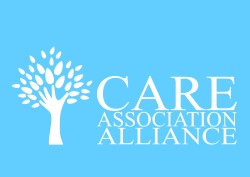Updates to COVID-19 Testing in Adult Social Care Guidance
You may have spotted an update to this guidance yesterday but been unsure what actually changed because of the unhelpful change log.
The key update to the guidance is in section 2.1 ‘Symptomatic Testing for Staff and Residents’ which now directs you to the IPC COVID-19 Supplement to explain when symptomatic testing processes should be followed. This is ahead of an update to the COVID-19 supplement in the coming week or two to reflect clarifications to symptomatic testing. An NHS Test and Trace newsletter email containing information summarising the planned updated guidance has now been sent to managers of services. I have copied this below and added some emphasis. Note the ‘ands’. Please also note that the newsletter also contains information about ordering rapid response and outbreak tests (note the sentence at the bottom of the email newsletter about accessing tests for admission from the community or another care setting) which I haven’t included in the summary below.
Staff symptomatic testing
Social care staff who have symptoms of a respiratory infection, and who have a high temperature or staff who have symptoms of a respiratory infection and do not feel well enough to attend work should take an LFD test as soon as they feel unwell (day 0). Staff with respiratory symptoms who feel well enough to work and do not have a temperature, do not need to take a symptomatic test and can continue working.
If the result of this LFD test is positive, staff should follow the advice in the section ‘If a staff member receives a positive lateral flow or PCR test result’ in the IPC COVID-19 Supplement.
If the LFD test result is negative, they should take another LFD test 48 hours later, staying away from work during this time. If this is also negative, they can return to work if well enough to do so.
Symptoms of COVID-19, flu and common respiratory infections include:
- headache that is unusual or longer lasting than usual
- muscle aches or pains that are not due to exercise
- shortness of breath
- high temperature, fever or chills
- continuous cough
- loss of, or change in, your normal sense of taste or smell
- unexplained tiredness, lack of energy
- not wanting to eat or not feeling hungry
- sore throat, stuffy or runny nose
- diarrhoea, feeling sick or being sick
Residents symptomatic testing
People who are older or frail may present with atypical symptoms which should also be considered as part of the assessment about whether someone may have COVID-19. Changes in well-being, behaviour and clinical signs including a high temperature should all be considered, and clinical advice sought if necessary, for example from the GP if the person is unwell.
Residents who have symptoms of a respiratory infection (listed above) and have a high temperature or who have symptoms of a respiratory infection and are too unwell to carry out their usual activities should take a LFD test as soon as they feel unwell (day 0). As noted above, atypical symptoms should also be considered for people who are older or frail and clinical advice sought if necessary.
Residents should immediately take a lateral flow test as soon as they develop symptoms and if this first test is negative, they should take another lateral flow test 48 hours after the first test, and avoid contact with others during this time.

